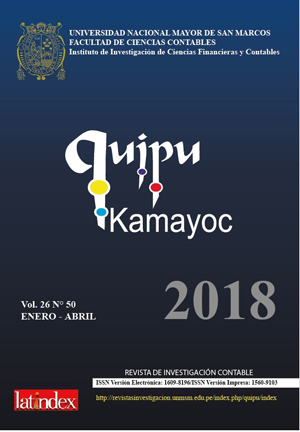Environmental taxation as an economic instrument to negative externality produced by pollution in Peru
DOI:
https://doi.org/10.15381/quipu.v26i50.14730Keywords:
Environmental policies, Taxes, Climate change, Global warming, Externalities, Social welfare, Sustainable development.Abstract
The present investigation allowed to describe how environmental taxation can be applied as an economic instrument in the face of pollution, this being a negative externality. A descriptive analysis of the market failure that represents pollution was carried out, and the tax economic instrument on environmental matters was presented as an action tool, which acts first as compensation for the damage performed and second, as an incentive for behaviors that are not harmful to the environment. Likewise, the various macro figures that represent the cost of environmental degradation in Peru in terms of Gross Domestic Product, provided by the World Bank, were presented. The main environmental problems that generate the most significant economic costs were determined. In this way, it was concluded that the most affected natural resources are air and water, which consequently affect the health and general well-being, and that taxation or environmental taxation exists as an economic instrument to reduce and avoid harmful actions that threaten ourselves in short or long terms and the environment where we live.
Downloads
Downloads
Published
Issue
Section
License
Copyright (c) 2018 Paula Denisse García Malpica

This work is licensed under a Creative Commons Attribution-NonCommercial-ShareAlike 4.0 International License.
AUTHORS RETAIN THEIR RIGHTS:
a. Authors retain their trade mark rights and patent, and also on any process or procedure described in the article.
b. Authors retain their right to share, copy, distribute, perform and publicly communicate their article (eg, to place their article in an institutional repository or publish it in a book), with an acknowledgment of its initial publication in Quipukamayoc .
c. Authors retain theirs right to make a subsequent publication of their work, to use the article or any part thereof (eg a compilation of his papers, lecture notes, thesis, or a book), always indicating the source of publication (the originator of the work, journal, volume, number and date).





























